Abstract
Standardized hemagglutination and hemagglutination-inhibition procedures are described and statistically evaluated for all animal viruses where applicable, except for rubella and the arbovirus group. The standardized tests employ a constant phosphate-buffered saline diluent and constant volumes of serum, antigen, and standardized erythrocyte suspension. The standardized hemagglutination test has a reproducibility of 84 to 96% with adenoviruses, rubeola, and the myxoviruses, and 78 to 93% with reoviruses; the standardized hemagglutination-inhibition test has a reproducibility of 95 to 100% with all viruses tested.
Full text
PDF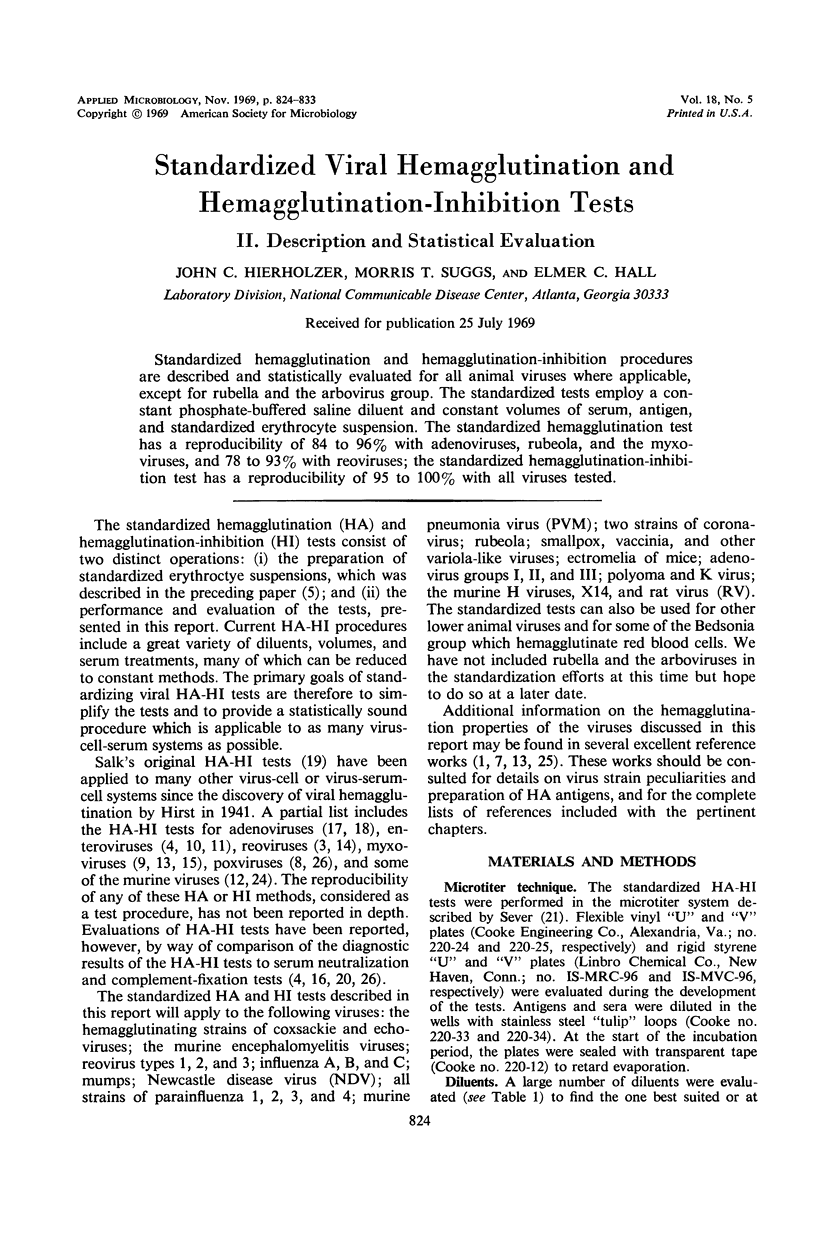
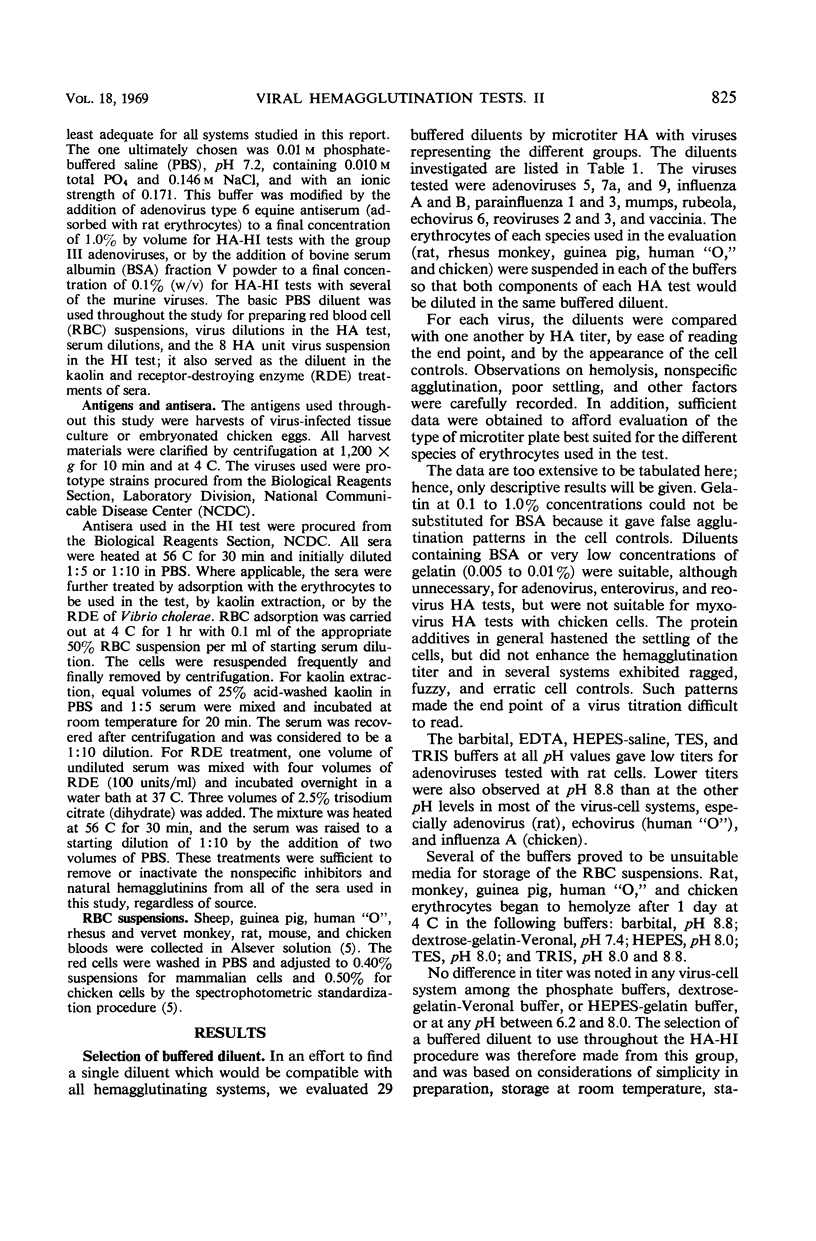
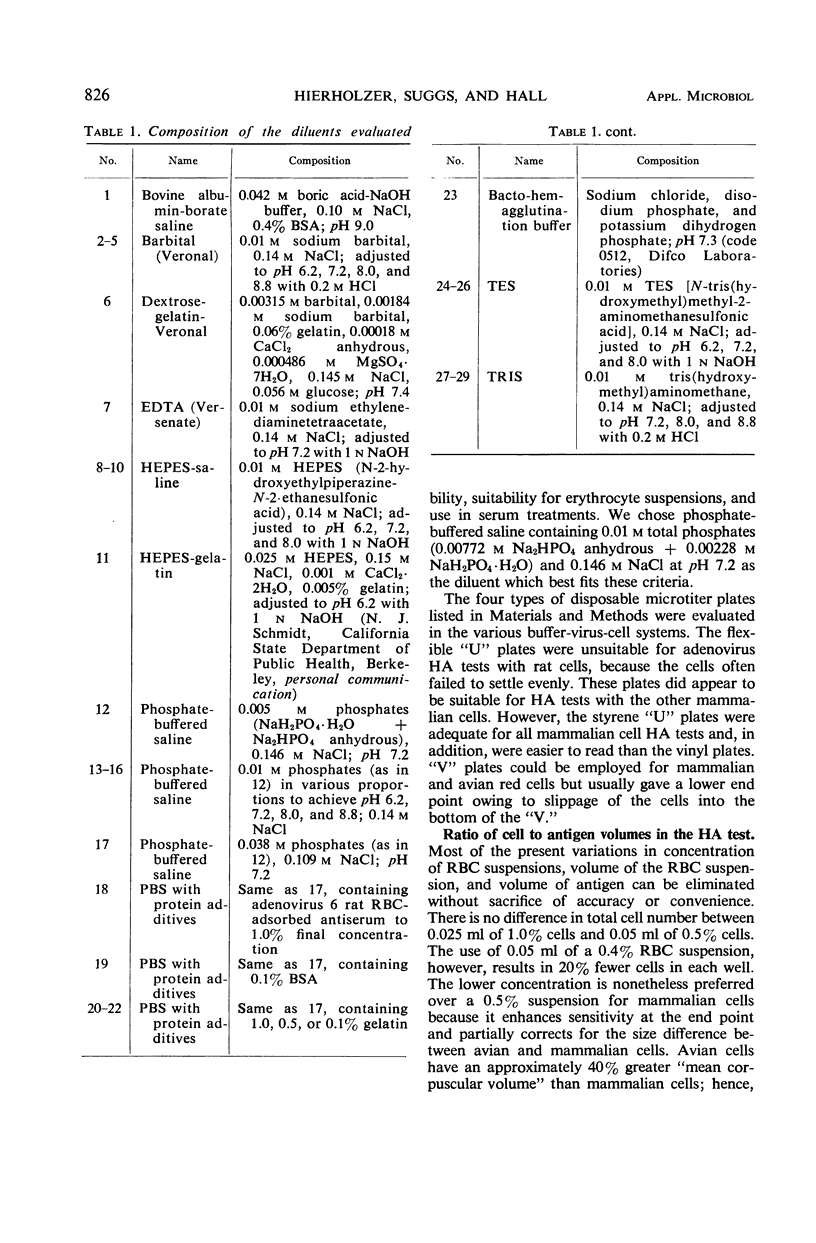
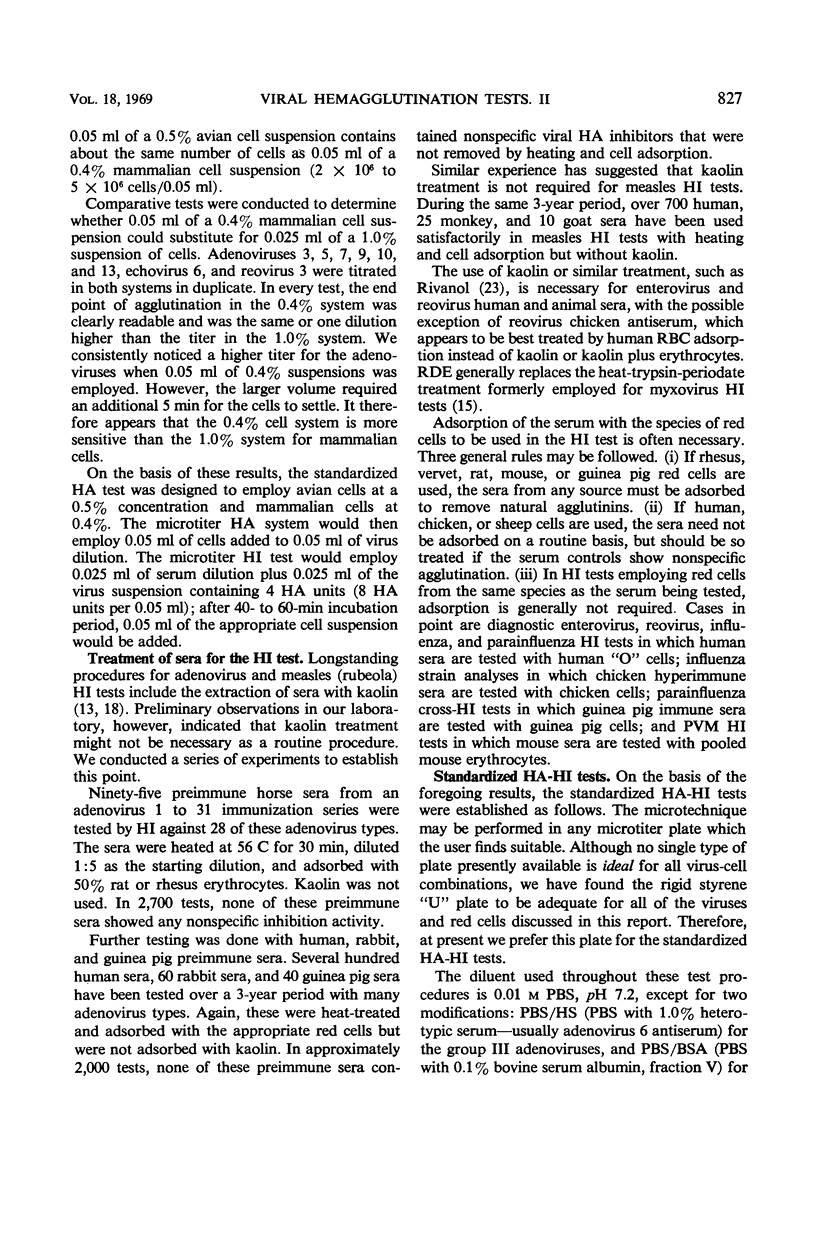
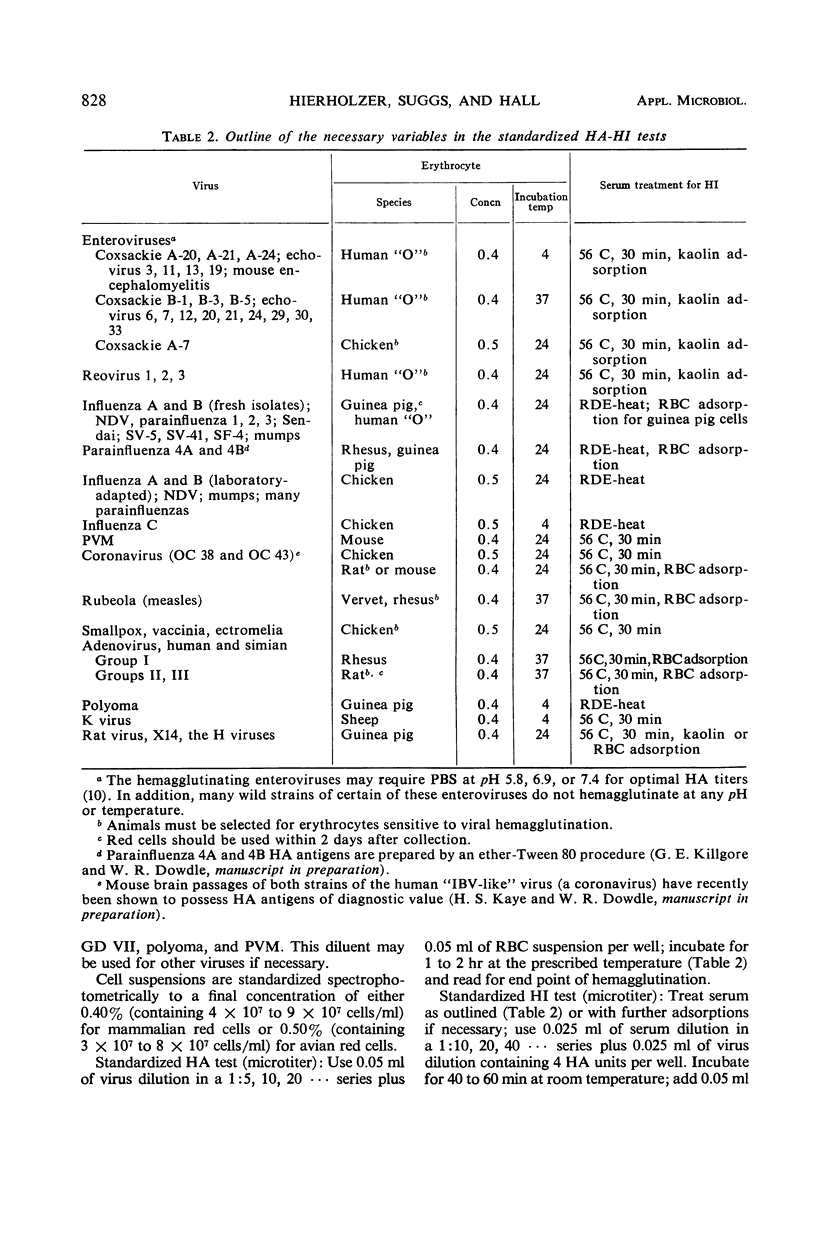
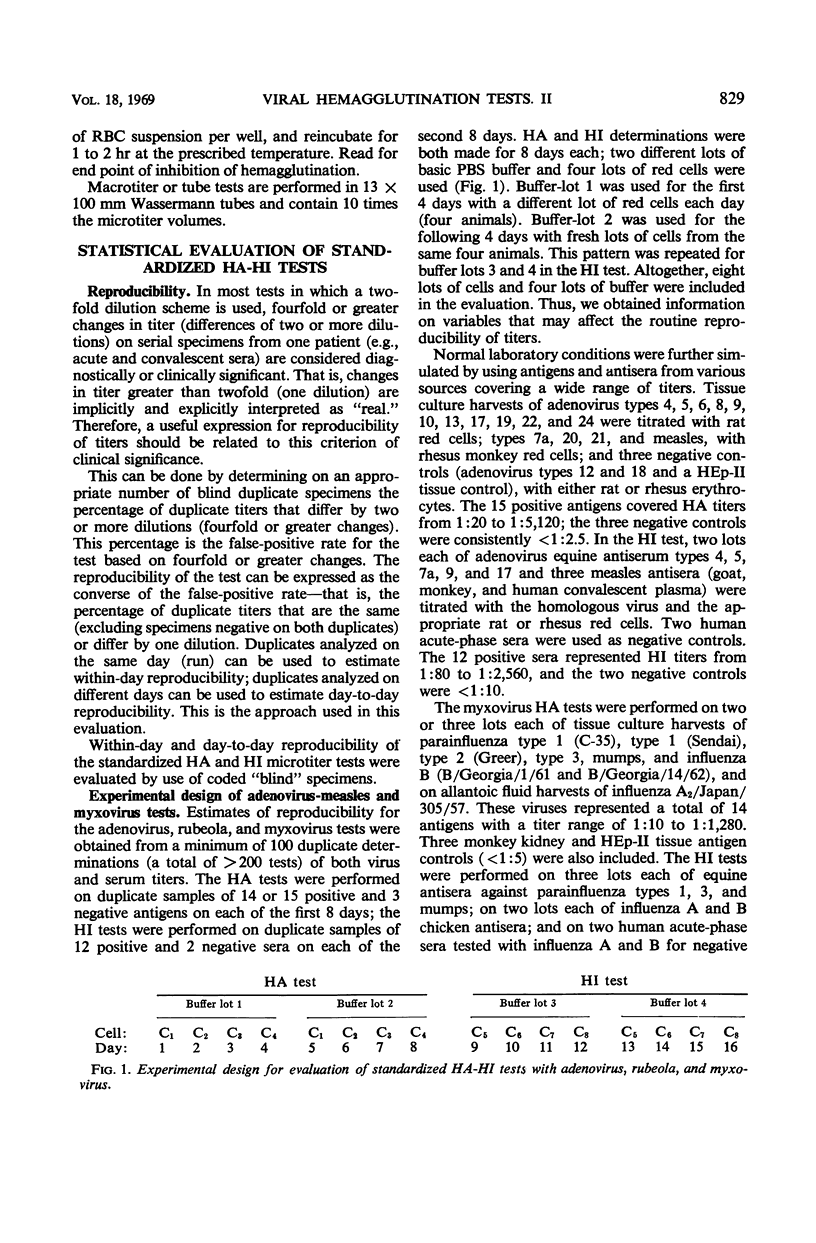
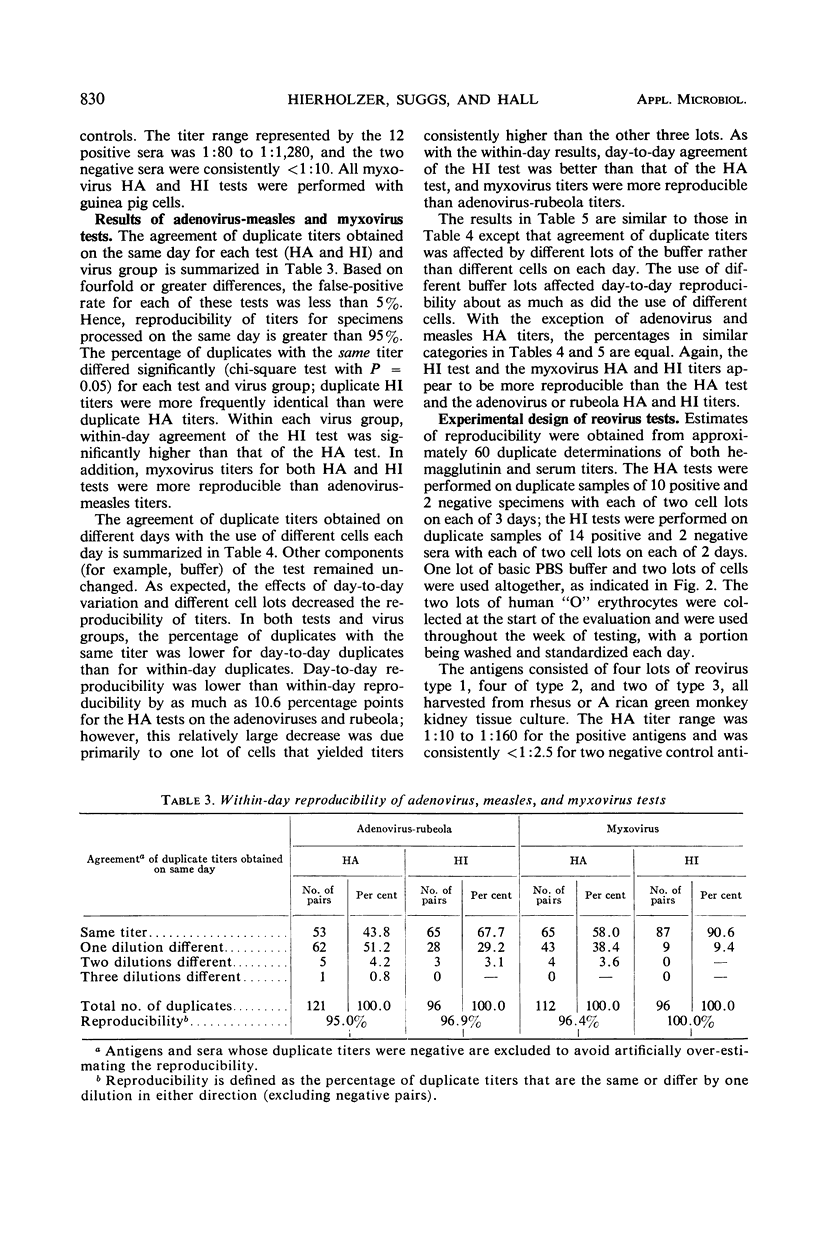
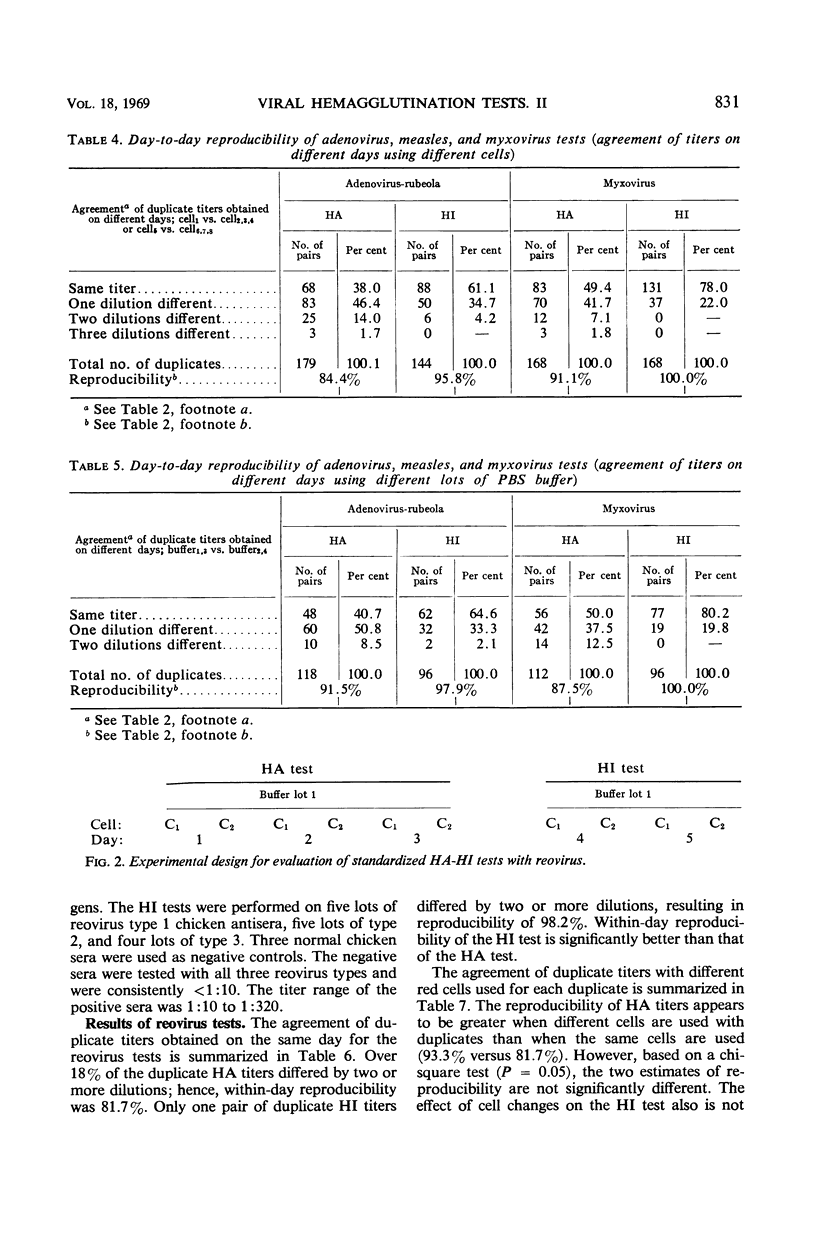
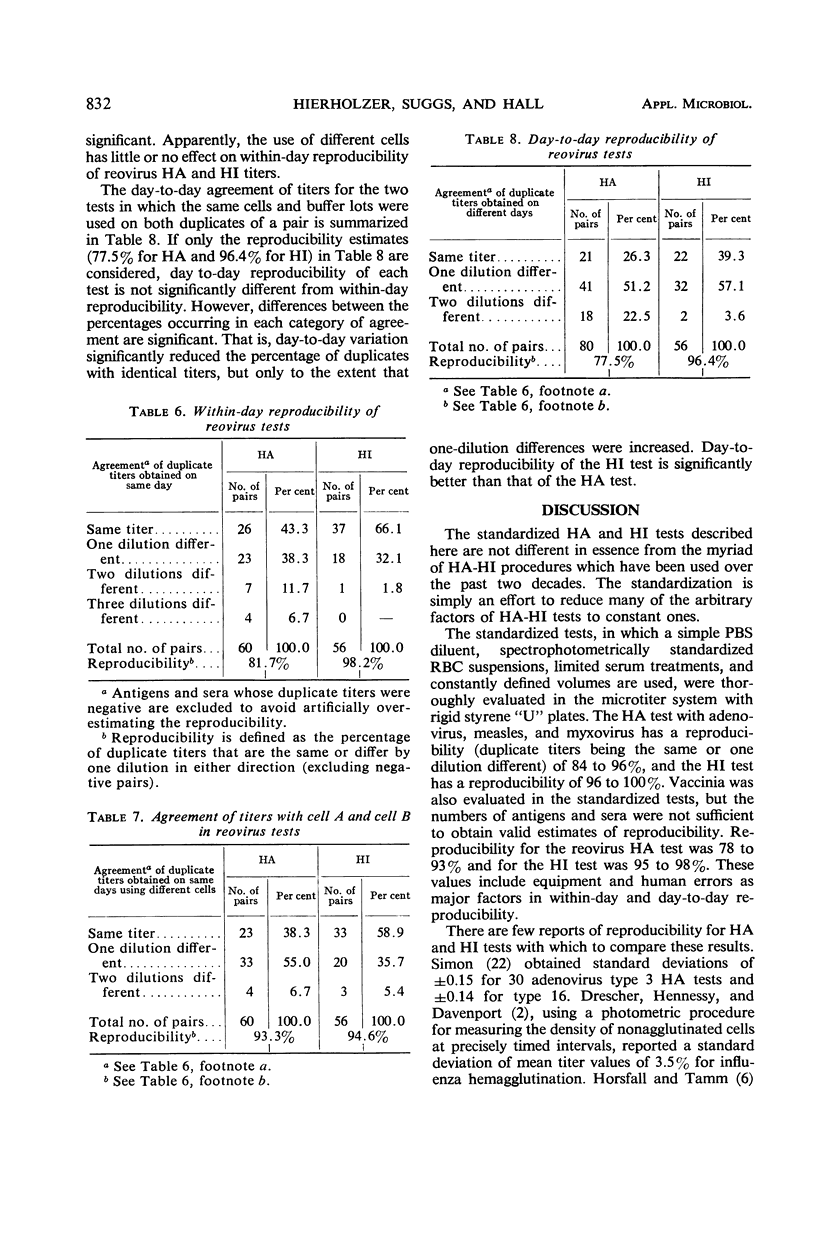
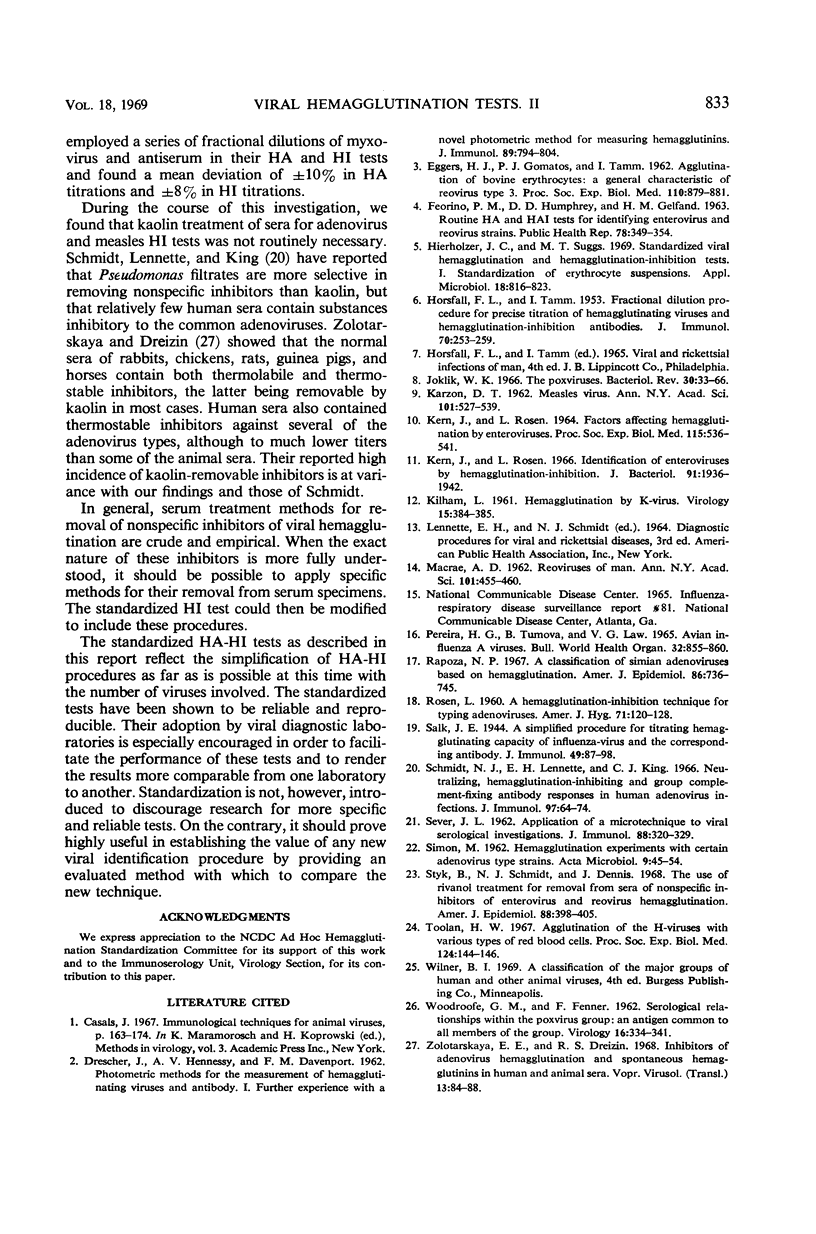
Selected References
These references are in PubMed. This may not be the complete list of references from this article.
- EGGERS H. J., GOMATOS P. J., TAMM I. Agglutination of bovine erythrocytes: a general characteristic of reovirus type 3. Proc Soc Exp Biol Med. 1962 Aug-Sep;110:879–881. doi: 10.3181/00379727-110-27679. [DOI] [PubMed] [Google Scholar]
- FEORINO P. M., HUMPHREY D. D., GELFAND H. M. Routine HA and HAI tests for identifying enterovirus and reovirus strains. Public Health Rep. 1963 Apr;78:349–354. [PMC free article] [PubMed] [Google Scholar]
- HORSFALL F. L., Jr, TAMM I. Fractional dilution procedure for precise titration of hemagglutinating viruses and hemagglutination-inhibiting antibodies. J Immunol. 1953 Mar;70(3):253–259. [PubMed] [Google Scholar]
- Hierholzer J. C., Suggs M. T. Standardized viral hemagglutination and hemagglutination-inhibition tests. I. Standardization of erythrocyte suspensions. Appl Microbiol. 1969 Nov;18(5):816–823. doi: 10.1128/am.18.5.816-823.1969. [DOI] [PMC free article] [PubMed] [Google Scholar]
- Joklik W. K. The poxviruses. Bacteriol Rev. 1966 Mar;30(1):33–66. doi: 10.1128/br.30.1.33-66.1966. [DOI] [PMC free article] [PubMed] [Google Scholar]
- KARZON D. T. Measles virus. Ann N Y Acad Sci. 1962 Nov 30;101:527–539. doi: 10.1111/j.1749-6632.1962.tb18894.x. [DOI] [PubMed] [Google Scholar]
- KERN J., ROSEN L. FACTORS AFFECTING HEMAGGLUTINATION BY ENTEROVIRUSES. Proc Soc Exp Biol Med. 1964 Feb;115:536–541. doi: 10.3181/00379727-115-28961. [DOI] [PubMed] [Google Scholar]
- KILHAM L. Hemagglutination by K-virus. Virology. 1961 Nov;15:384–385. doi: 10.1016/0042-6822(61)90372-5. [DOI] [PubMed] [Google Scholar]
- Kern J., Rosen L. Identification of enteroviruses by hemagglutination-inhibition. J Bacteriol. 1966 May;91(5):1936–1942. doi: 10.1128/jb.91.5.1936-1942.1966. [DOI] [PMC free article] [PubMed] [Google Scholar]
- Pereira H. G., Tůmová B., Law V. G. Avian influenza A viruses. Bull World Health Organ. 1965;32(6):855–860. [PMC free article] [PubMed] [Google Scholar]
- ROSEN L. A hemagglutination-inhibition technique for typing adenoviruses. Am J Hyg. 1960 Jan;71:120–128. doi: 10.1093/oxfordjournals.aje.a120085. [DOI] [PubMed] [Google Scholar]
- Rapoza N. P. A classification of simian adenoviruses based on hemagglutination. Am J Epidemiol. 1967 Nov;86(3):736–745. doi: 10.1093/oxfordjournals.aje.a120781. [DOI] [PubMed] [Google Scholar]
- SEVER J. L. Application of a microtechnique to viral serological investigations. J Immunol. 1962 Mar;88:320–329. [PubMed] [Google Scholar]
- SIMON M. Haemagglutination experiments with certain adenovirus type strains. Acta Microbiol Acad Sci Hung. 1962;9:45–54. [PubMed] [Google Scholar]
- Schmidt N. J., Lennette E. H., King C. J. Neutralizing, hemagglutination-inhibiting and group complement-fixing antibody responses in human adenovirus infections. J Immunol. 1966 Jul;97(1):64–74. [PubMed] [Google Scholar]
- Styk B., Schmidt N. J., Dennis J. The use of rivanol treatment for removal from sera of nonspecific inhibitors of enterovirus and reovirus hemagglutination. Am J Epidemiol. 1968 Nov;88(3):398–405. doi: 10.1093/oxfordjournals.aje.a120900. [DOI] [PubMed] [Google Scholar]
- Toolan H. W. Agglutination of H-viruses with various types of red blood cells. Proc Soc Exp Biol Med. 1967 Jan;124(1):144–146. doi: 10.3181/00379727-124-31685. [DOI] [PubMed] [Google Scholar]
- WOODROOFE G. M., FENNER F. Serological relationships within the poxvirus group: an antigen common to all members of the group. Virology. 1962 Mar;16:334–341. doi: 10.1016/0042-6822(62)90255-6. [DOI] [PubMed] [Google Scholar]


